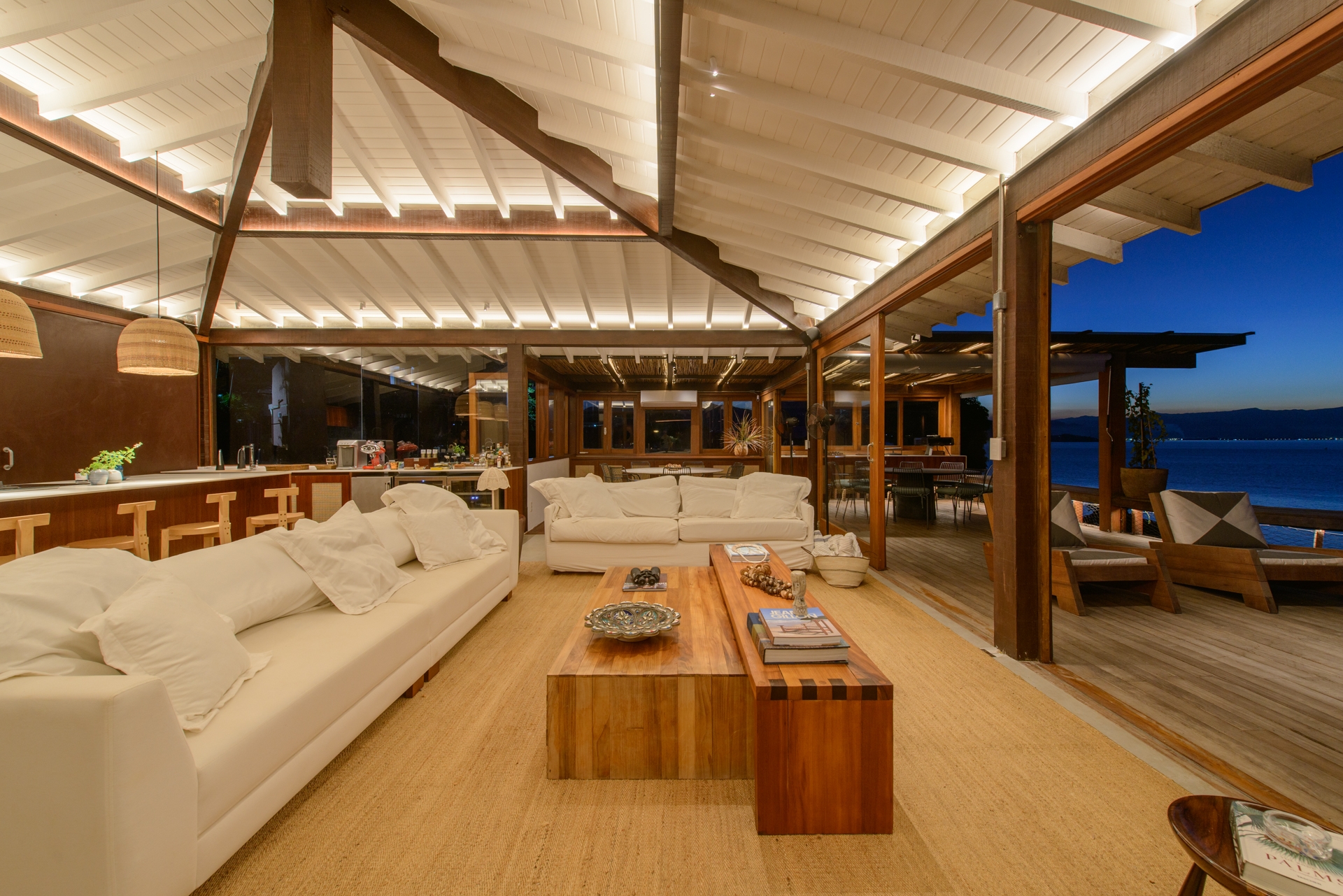Prize(s) Honorable Mentions
Lighting Design/Product Company Welight
Lead Designers Jayme Liande
Client Vanessa Gordilho
Photo Credits Edson Ferreira
Completion Date Dezember 2924
Project Location Ilhabela - São Paulo
Entry DescriptionThis project explores the expressive potential of light as a spatial and emotional agent, seamlessly integrated into a contemporary tropical architecture. Through a restrained yet poetic approach, the lighting enhances the materiality of natural elements like wood, white-painted ceilings, woven textures while fostering a sense of comfort, rhythm, and connection to the surrounding landscape.
The core strategy centers on indirect linear lighting, meticulously embedded within ceiling recesses and between exposed rafters, using LED linear fixtures, all dimmed to allow precise modulation of light intensity, enabling dynamic lighting scenes that adapt to the time of day and desired atmosphere. The result is an immersive environment that glows with visual harmony and zero glare.
In interior spaces, soft washes of light embrace walls and ceilings, highlighting the architectural structure while evoking warmth and intimacy. In circulation areas and bedrooms, the lighting subtly guides movement, offering ambient continuity across spaces. Outdoors, the approach becomes more theatrical embedded in the pool deck and railings, creating delicate reflections that echo the natural horizon and wate.
The lighting specification emphasizes a warm color temperature (2700K) and a high color rendering index (CRI >90) to ensure accurate representation of finishes, materials and vegetation.
Sustainability ApproachA core element of the design is the use of low-voltage 24V LED systems, chosen for their high luminous efficacy, low energy consumption, and extended lifespan. Dimming is controlled via PWM modules, allowing the lighting to operate at variable intensities depending on user needs, significantly reducing energy usage during non-peak hours.
To mitigate carbon footprint, the system was designed to be modular and easily maintainable. Power supplies were decentralized and distributed strategically, reducing energy loss due to voltage drop across long runs and optimizing performance. Additionally, the infrastructure supports easy replacement and future upgrades without requiring structural changes—an important strategy aligned with the principles of refitting and circular economy.


